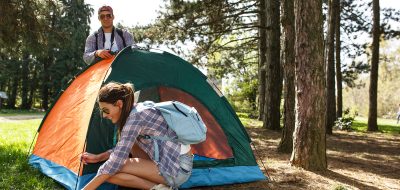Few can dispute the importance of nature tourism in Texas, especially within the Rio Grande Valley.

Visitors to Santa Ana are often greeted with the raucous cry of the drab brown, scrawny-looking, turkey-like bird called a plain chachalaca, a bird that reaches its northern limits in the Valley. © Rex Vogel, all rights reserved
According to a study conducted by Mathis and Matisoff (2004), Texas is the number one birdwatching state/province in North America, and The Valley is considered the number two birding destination in North America.
Nestled between the Gulf of Mexico and the Laguna Madre, South Padre Island acts as the easternmost gateway to the Rio Grande Valley. This four-county area of extreme deep South Texas is, in all actuality, more of a delta than a valley, and its southern border forms the present-day wide, sweeping flatlands of the once mighty Rio Grande River.
The unique climate in South Texas attracts nature aficionados from all over the nation and the world, especially for birding, butterfly watching, exploring unique plants, Texas wildlife, and more. A vast majority of Texas birds, butterflies, dragonflies, amphibians, reptiles, and other mammals inhabit the wildlife of South Texas—making it a premier spot to observe nature in its natural habitat.
The Rio Grande Valley hosts one of the most spectacular convergences of birds on earth. Each year, birders come to The Valley to see bird species they can’t find anyplace else in the country—from the green jay, black-bellied whistling ducks, and the buff-bellied hummingbird to the great kiskadee, roseate spoonbill, and the Altamira oriole.
The Rio Grande Valley nature scene is filled with many wildlife hot spots including three national wildlife refuges—Santa Ana, Laguna Atascosa, and Lower Rio Grande Valley.
Santa Ana National Wildlife Refuge

Visitors to Santa Ana are often greeted with the raucous cry of the drab brown, scrawny-looking, turkey-like bird called a plain chachalaca, a bird that reaches its northern limits in the Valley. © Rex Vogel, all rights reserved
Step into a rare tropical world at Santa Ana National Wildlife Refuge. Spanish moss drips from trees. Noisy Chachalacas welcome the morning dawn. A malachite butterfly flits from the shadows. The wildlife clientele is truly international here along the most southern stretch of the Rio Grande.
At Santa Ana, subtropical, Gulf Coast, Great Plains, and Chihuahuan Desert meet. You are entering the 2,088-acre home of more than 500 species of birds, half of all butterfly species found in North America, and such rarities as the indigo snake and the Altamira oriole. Established in 1943 for the protection of migratory birds, Santa Ana provides a glimpse into a world that has vanished from 95 percent of the Lower Rio Grande Valley.
Address: 3325 Green Jay Road, Alamo, TX 78516
Phone: (956) 784-7500
Website: fws.gov/southwest/refuges
Laguna Atascosa National Wildlife Refuge
On the most southern tip of Texas, along the shores of the Laguna Madre, dense patches of thorny brush rise among unique wind-blown clay dunes called “lomas.” Thorn forest intermingles with freshwater wetlands, coastal prairies, mudflats, and beaches. At Laguna Atascosa, tropical and temperate zones overlap, the endangered ocelot silently hunts within the brushlands, aplomado falcons soar above the grasslands, and nearly half of all the bird species found in the continental United States rest, feed, nest, and migrate.
Laguna Atascosa has two driving loops and five nature viewing trails that can be walked, biked, or hiked. Additionally, the “Alligator Pond,” several resacas, and a portion of the Laguna Madre Bay fall within the refuge’s boundary.
Address: 22817 Ocelot Road, Los Fresnos, TX 78566
Phone: (956) 748-3607
Website: fws.gov/southwest/refuges
Lower Rio Grande Valley National Wildlife Refuge

The Salineño Birder’s Colony (deserted in summer), only about 100 yards above the Rio Grande, welcomes birders to visit the feeders; this is usually the best bet for finding three species of orioles--Altamira , hooded, and Audubon (pictured above). © Rex Vogel, all rights reserved
The Lower Rio Grande Valley National Wildlife Refuge extends along the final 275 miles of the Rio Grande River from Falcon Dam to the Gulf of Mexico. Along the way, it provides important habitat for a variety of wildlife that cannot be seen anywhere else in the United States.
Only certain tracts of the refuge are open to the public. These include Boca Chica Beach in Cameron County; the La Sal del Rey, Monte Cristo, and Yturria Brush Tracts in Hidalgo County, the Teniente and East Lake Tracts in Willacy County; and the La Puerta and Salineño Tracts in Starr County. Historical sites include La Sal del Rey, natural salt lakes where Native Americans, Spanish explorers, and area settlers came to mine salt; and the Palmito Ranch Battlefield, the site of the last battle of the Civil War.
Headquarters for the Lower Rio Grande Valley National Wildlife Refuge is located at Santa Ana National Wildlife Refuge. Interpretive and educational programs are managed in conjunction with the Santa Ana staff.
Mailing Address: Rt. 2 Box 202A, Alamo, Texas 78516
Phone: (956) 784-7500
Website: fws.gov/southwest/refuges
Please Note: This is the first in a series of stories on Rio Grande Valley nature hot spots
Texas Spoken Friendly
Worth Pondering…
There is nothing in which the birds differ more from man than the way in which they can build and yet leave a landscape as it was before.
—Robert Lynd, The Blue Lion and Other Essays.
You May Also Like
- Win a White Hawk Promotion
- Pythons Wiping out Everglades Mammals
- Odorico of Pordenone Trailer Concept Enters the Space Age
- Go RVing Launches National RV Giveaways
- Airstream Teams with Fiamma to Develop Unique Bike Carrier
If you enjoy these articles and want to read more on RV travels and lifestyle, visit my website: Vogel Talks RVing.






